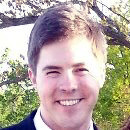Since 2012, Jessica Heard has led teacher recruitment and talent acquisition in DC Public Schools. Before stepping into an official position with DCPS, she was the site manager for DC Teaching Fellows (DCTF)—just down the hallway from where she sits now.
2018 marks the first year since 2000 that TNTP does not have an active cohort of Teaching Fellows in DCPS classrooms. With the program wrapped up, we sat down with Jessica to discuss a few challenges and successes of the program—and learn about what’s next for the district.
Why was DC Teaching Fellows needed in DC Public Schools?
In short, the quality of teaching talent in schools was inconsistent. Because of this, the quality of instruction students were receiving was not as high as it should be.
[subscribe]
I distinctly remember working as a DCPS partner many years before I joined TNTP and coming across phenomenal veteran teachers who were doing the same great job for their students year after year. I also remember seeing teachers who were not serving kids well and who did not have positive regard for their students, colleagues, or work. I also remember seeing a high number of students who were actively disengaged. And I’m not just talking about students who weren’t paying attention in class—I’m talking about kids wandering the halls and missing class altogether, if they even made it to school at all.
Clearly, there were some real gaps when it came to talent and the kinds of expectations that were being set for students.
Because of this, I was excited to join TNTP and DC Teaching Fellows, where we made it our mission to ensure that, come hiring season, if a school didn't have sufficient veteran candidates to choose from, they were getting high-quality, well-supported and well-trained novices in the classroom.
What’s it been like collaborating with TNTP?
Being a TNTP alum, and now in a district role, I think it's incredibly important that TNTP designed the program to align with the district’s needs—and then was responsive as those needs changed. That approach is a big part of why the partnership was so successful.
Also, I just can't underscore enough how much having TNTP’s teacher effectiveness framework helped. It changed the way we did our work with DC Teaching Fellows, and it continues to inform our work with DCPS. The framework makes sure everything we do is about getting better results for kids, which sometimes leads us to do counterintuitive things.
Working in education, change is the name of the game whether you're with DC Teaching Fellows, DCPS, or TNTP. If you ask me, it’s what makes our work exciting and meaningful, as well as timely.
How did DC Teaching Fellows evolve over the time you were involved with the program, both as a staff member and then as a client?
The new effectiveness measures showed us the quality of teachers in the classroom wasn’t as high as we wanted. So, we started thinking differently about how we could increase the quality of people who make it into our schools.
So, DCTF began doing effectiveness screenings determining—even before the fellows finished training—whether or not they were actually ready to enter the classroom. This didn’t mean fellows needed to do everything perfectly, but it did mean looking for a specific set of classroom management and instructional skills that we know are particularly important for new teachers. Of course, the new policy led to some difficult conversations with fellows who weren’t meeting the bar, but it was well worth it to get our kids excellent instruction.
We also went beyond our own program and started to partner with other practitioner teacher programs, ensuring that people were not approved for licensure unless they were rated effective. I would say that the teacher effectiveness lens I learned with TNTP and the DC Teaching Fellows has continued to serve me in the years that I've been with DCPS.
What does hiring at DCPS look like now?
We’ve seen an increase in our ability to attract candidates, particularly experienced teachers looking for a new place to work—but we still need to hire teachers that are new to the profession. We’re always taking nuanced looks at the data and trying to figure out what might predict performance, and using that to guide our hiring practices. We found there are lots of novice teachers who are just as strong—if not stronger—than some of the experienced candidates. We’re helping principals focus on measures of effectiveness as opposed to rough proxies like experience that won't necessarily get them the outcomes they want.
That said, I think the biggest lever that we've pulled since I joined the talent acquisition team is starting the teacher and school leader hiring process earlier. That goes back to a TNTP report from years ago that showed some of the unexpected benefits of early hiring. This more ambitious timeline forced us to help principals more efficiently identify people who have the potential to be effective, and come up with new systems for recruiting teachers.
Now, we fill our vacancies faster than ever, and our teachers tend to stick around longer because they’re a good fit with the school. It’s a win-win for everyone.
Can you talk more about retention, and what DCPS is doing to encourage teachers to stay?
A few years ago, DCPS launched a formalized career ladder for teachers called LIFT, the Leadership Initiative for Teachers. LIFT provides a very clear portfolio of opportunities tied to a teacher’s level of effectiveness, alongside how well that effectiveness has been sustained over time. Essentially, what we’re trying to do is make classroom teaching a career destination with lots of opportunities for leadership and constant learning. We want to undercut and change the narrative that to move up in education, you have to move out of the classroom.
Another thing we care deeply about when it comes to retention is school culture. Today, we’re partnering with TNTP to administer surveys to understand the ways school environments are supporting teacher retention. We’re also using survey results to determine steps we may need to make to bridge gaps where cultures aren’t as supportive.
Finally, we’ve worked to ensure our teachers are recognized for all they do. Sometimes this means celebrating successes, like with our Standing Ovation awards. We also know compensation plays a big role and have worked hard to make sure our effective teachers are paid like the expert professionals they are. DCPS is probably the only district in the country where a highly effective teacher can make six figures within their first seven years in the classroom.
What’s next?
From a talent acquisition standpoint, I'm thinking more and more about how we can plant seeds earlier in the pipeline. I've been excited by conversations we've been having with local universities about ways they can better prepare their students to work with us.
Until recently, the majority of student teaching placements—for college students who were preparing to be K-12 teachers—were happening in a minimal subset of our schools, many of which did not represent what it was like to teach in a DCPS school. Because of this, even though someone might do their student teaching with us, they weren’t actually prepared to teach in most schools in the district. So, we’ve been working with universities to dispel some of the misconceptions about our schools—namely, that they aren’t good places to learn to teach. Our schools are great places to learn to teach, and our talented local college students deserve to benefit from this!
We’re also thinking even earlier in the pipeline—to the kids we’re teaching in high school and middle school who might one day want to become teachers themselves. We’ve done so much to create great professional conditions for teachers, that we hope the career path is looking more promising for our kids than it has in the past. We talk about how we want to prepare students for high wage, high demand jobs—and we want teaching to be one of these jobs.
To me, the theme here is that the end of DC Teaching Fellows after 16 years is a success story because the district doesn’t have the same need for alternative pipelines as it once did. Is that right?
I agree entirely. We certainly don’t have the same reliance on alternative pipelines; the need is far less and extremely targeted. I think DC Teaching Fellows is a success story in a few ways. For one, we’ve prepared dozens of quality teachers who are still with us, teaching in our classrooms and moving into leadership roles in our schools and in the district office.
A teacher I recently spoke with comes to mind. A few months back, she was recruited by a neighboring district that has a pretty good reputation. We’ve had some of our best teachers switch to that district over the years. But instead of emailing me to tell me she was leaving, she emailed me to tell me she decided to stay with DCPS, and just wanted to let me know they’d contacted her. When I asked her why she turned them down, her reason was not a sense of loyalty or moral obligation to us. Instead, she said, “I like my principal, and I'm well compensated. The other district can't make me a better offer.” That would never have happened five years ago; that’s a big win for us, especially because we know she’s not alone.
Another exciting thing is that a lot of our thinking and processes are now accessible through reports that are informing practices in other districts. This is a good sign that we’re having a more significant effect on the education sector. After all, that’s what we’re really trying to do here. We don’t just want to make sure our kids in DCPS get an excellent education—we want all kids to get an excellent education.





